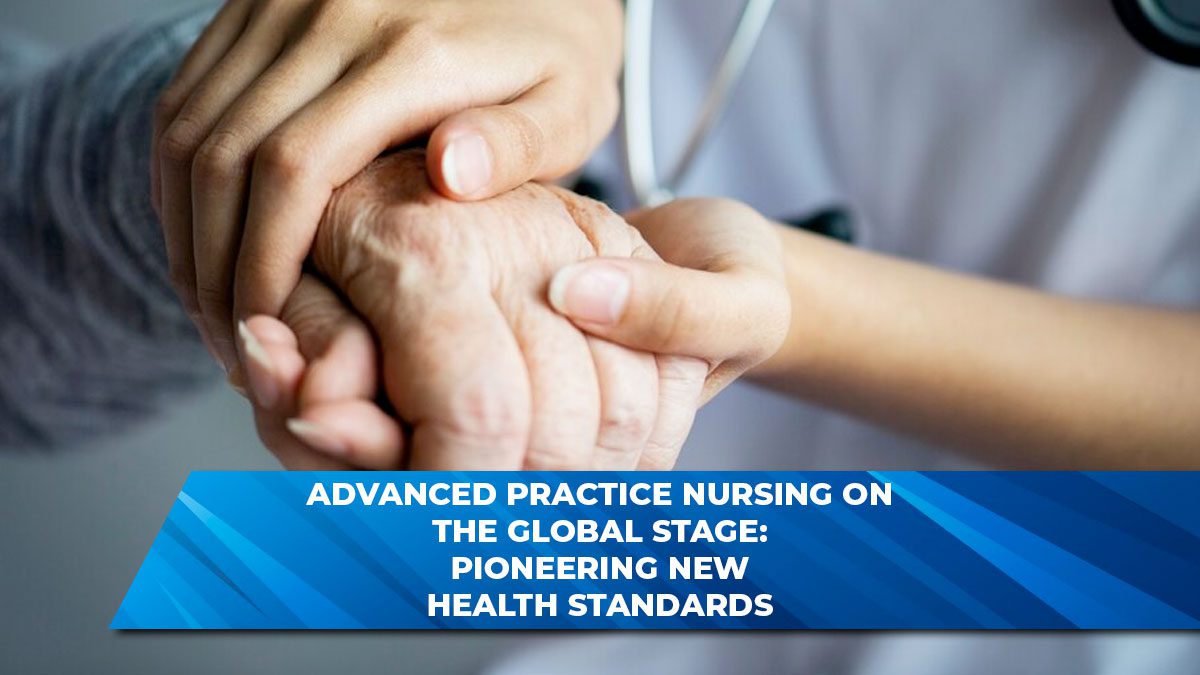Advanced Practice Nursing Roles: Essential Strategies for Successful Integration
Facilitating the Introduction and Integration of Advanced Practice Nursing Roles
Pan-Approaches and Collaboration
Facilitating the introduction and integration of Advanced Practice Nursing (APN) roles requires a comprehensive approach that spans across jurisdictions. Internationally, collaboration between countries is vital to developing human resource policies, legislation, regulation, and competency development. For example, pan-approaches at the international level foster mutual learning and sharing of intellectual capital and resources, which is essential for developing APN roles in lower-income countries (WHO, 2020). Models outlining strategies for culturally relevant international partnerships have proven effective, particularly in nursing and midwifery (Hu et al., 2019; Spies et al., 2017).
Human Resource Policies and Priorities
The introduction and integration of APN roles often begin with policy priorities set by global organizations like the United Nations and the World Health Organization (WHO). These priorities have significantly raised the profile of APN roles globally. For instance, the PAHO 52nd Directing Council’s resolution on Human Resources for Health emphasized the introduction of APN roles in Latin America and the Caribbean, triggering partnerships that facilitated rapid APN role development in countries like Chile (Aguirre-Boza et al., 2019).
At the national level, strategic partnerships and policy analyses are crucial. These collaborations help identify priorities and barriers to APN role introduction and guide the implementation process. The success of these policies is evident in countries with centralized healthcare governance, such as Ghana and Qatar, where national strategies aligned with APN roles have led to significant advancements (Matthews & Campbell, 2015; Oxford Business Group, 2014).
Regulation
Regulation plays a critical role in facilitating the introduction and integration of APN roles. Regulatory frameworks define the scope of practice, licensure, credentials, and educational requirements, ensuring public safety and high-quality care. However, international variability in regulatory requirements for APN roles presents challenges. The WHO (2020) emphasizes the need for countries to adopt the least restrictive regulatory policies while maintaining public safety, as restrictive regulations can inhibit the innovation and integration of APN roles.
Pan-approaches to legislation and regulation have been successful in countries like Canada, the United States, and New Zealand, where consistent policies have improved role understanding and implementation across jurisdictions (Bryant-Lukosius, Martin-Misener et al., 2018). Engaging the public in the regulatory discourse is also a valuable strategy, as seen in Israel, where public support has been a driving force in expanding nurses’ scope of practice (Ben Natan et al., 2013).
Competency Development, Education, and Mentorship
The development of competencies, education, and mentorship programs is crucial for the successful introduction and integration of APN roles. Competencies provide the foundation for entry-to-practice requirements and APN education curricula. The International Council of Nurses (ICN) outlined competencies for APN roles, which have been instrumental in developing national competency frameworks (DiCenso et al., 2010).
Despite progress, there remains variability in APN education programs across countries, particularly in admission criteria, curricular content, and clinical requirements (Jeffery et al., 2020). Partnerships between countries with established APN roles and those with emerging roles can address education gaps, as seen in Qatar’s collaboration with the University of Calgary to develop nursing education programs (Oxford Business Group, 2014).
Mentorship and continued education are essential for new APN graduates, who often feel overwhelmed by the demands of their roles. Healthcare organizations have responded by providing transition supports, such as fellowships, internships, and mentorship programs, which help build confidence and strengthen skills in areas like research (Moss & Jackson, 2019; Bryant-Lukosius, 2015).
Facilitating the Introduction of APN Roles in Different Healthcare Contexts
The successful introduction and integration of APN roles depend on the healthcare context, including needs, policies, workforce, economics, and societal roles. In countries with centralized healthcare governance, national policies aligned with APN roles can accelerate their integration. For example, Ireland’s strategic approach led to the introduction of over 120 Nurse Practitioners (NPs) within eight years, a significant achievement compared to other countries (Delamaire & Lafortune, 2010).
Conversely, in countries with decentralized healthcare systems, such as Canada, the integration of APN roles can be more challenging due to disparate policies across provinces and territories. However, ongoing analysis and adjustments to policies can facilitate role integration and improve access to healthcare services, especially for underserved populations (Feyereisen et al., 2020).
International Collaboration and Global Integration of APN Roles
International collaboration is increasingly important for the global integration of APN roles. The WHO’s recommendations for strengthening the global nursing workforce, including APN roles, provide a framework for countries to align their policies and actions with global standards (WHO, 2020). The success of international collaborations, such as the Global Midwifery Twinning project, highlights the potential for similar initiatives to advance APN roles in low-income countries (Ireland et al., 2015).
Additionally, the ICN’s guidance on APN credentialing, developed with input from international stakeholders, is a positive step toward achieving consistency in APN roles across countries (ICN, 2020). This consistency is crucial for addressing global healthcare challenges and ensuring that APN roles are effectively integrated into healthcare systems worldwide.
Overcoming Barriers to APN Role Integration
Despite the progress made in introducing APN roles, several barriers remain. Regulatory restrictions, lack of clarity in role definitions, and inadequate education programs can hinder the integration of APN roles. Addressing these barriers requires a multi-faceted approach, including regulatory reform, public engagement, and international collaboration.
For example, restrictive scope of practice regulations can limit the potential of APN roles and increase healthcare costs (Ritter et al., 2018). To overcome this, countries need to adopt more flexible regulatory frameworks that allow APNs to practice to the full extent of their education and training. Additionally, improving the clarity of APN roles through standardized competencies and education programs can enhance role understanding and facilitate integration (Lowe et al., 2011).
FAQs
1. What are Advanced Practice Nursing (APN) roles?
Advanced Practice Nursing roles refer to highly specialized roles within nursing, such as Nurse Practitioners (NPs), Clinical Nurse Specialists (CNSs), and Nurse Anesthetists, that require advanced education, training, and certification.
2. Why is the integration of APN roles important?
Integrating APN roles is crucial for improving healthcare delivery, expanding access to care, especially in underserved areas, and addressing the growing complexity of healthcare needs.
3. What challenges exist in introducing APN roles?
Challenges include regulatory restrictions, variability in education programs, lack of role clarity, and resistance to change within healthcare systems.
4. How can international collaboration facilitate the introduction of APN roles?
International collaboration allows for the sharing of knowledge, resources, and best practices, which can accelerate the development and integration of APN roles, particularly in lower-income countries.
5. What role do national policies play in APN role integration?
National policies set the framework for healthcare priorities, regulation, and workforce development, which are essential for the successful integration of APN roles.
6. What is the significance of competency development in APN roles?
Competency development ensures that APNs have the necessary skills, knowledge, and judgment to provide safe and effective care, which is critical for the successful implementation of these roles.
7. How does regulation impact the introduction of APN roles?
Regulation defines the scope of practice, licensure, and education requirements, which are crucial for public safety and role clarity. However, overly restrictive regulations can hinder the integration of APN roles.
8. What are some examples of successful APN role integration?
Countries like Ireland and Qatar have successfully integrated APN roles through strategic national policies and partnerships, leading to significant improvements in healthcare delivery.
9. How can mentorship and education programs support APN role integration?
Mentorship and education programs provide essential support for new APN graduates, helping them transition into their roles, build confidence, and develop the necessary skills for successful role implementation.
10. What is the future of APN role integration globally?
The future of APN role integration depends on continued international collaboration, regulatory reform, and the development of standardized competencies and education programs that align with global healthcare needs.










